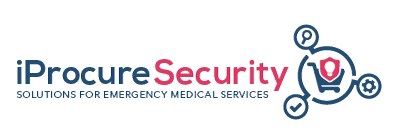483Terms
Help to improve our database
We are continuously collecting common terms used by the Emergency Medical Services practitioners across Europe. Help us improve our content and fill out the online form. If you are not able to find what you are looking for, please let us know by sending us a message through our contact page.
Your feedback is important for us and it will be fed into our Database for the EMS glossary.
Add new EMS termTo unify the communication and knowledge exchange between the emergency medical teams across Europe iProcureSecurity seeks to translate the identified EMS terms in all consortium languages.
That is why the project encourages everyone willing to contribute, to suggest and add missing terminology translation.
Add new translationiProcureSecurity Glossary
Emergency medical course specially focused on traumatic injuries (blunt or penetrating, road traffic crashes, crush injuries, assaults and burns).
The application of medicines, surgery, etc. in treating a disease or a disorder.
The process of sorting people based on their need for immediate medical treatment as compared to their chance of benefiting from such care. Triage is done in emergency rooms, disasters, and wars, when limited medical resources must be allocated to maximize the number of survivors. Triage in this sense originated in World War I. Wounded soldiers were classified into one of three groups: those who could be expected to live without medical care, those who would likely die even with care, and those who could survive if they received care
The sorting of and allocation of treatment to patients and especially battle and disaster victims according to a system of priorities designed to maximize the number of survivors. The sorting of patients (as in an emergency room) according to the urgency of their need for care.
The proportion of severely injured patients not managed by a dedicated trauma team.
A common emergency telephone number to reach emergency services.
Unmanned aircraft system (UAS) means an unmanned aircraft and the equipment to control it remotely.
An unmet need or a challenge in a PCP or PPI is a “ requirement or set of requirements that (…) [procurers] have now or (preferably) one that (…) [they] will have in the future, that current products, services or arrangements cannot meet, or can only do so at excessive cost or with unacceptable risk.”[1]An unmet need or challenge often becomes apparent whenever a procurer has to solve a problem that negatively impacts the efficiency of its internal operations or the quality of the service of public interest it offers to citizens or whenever a procurer has to implement policy objectives or legislations.
Region surrounding a city.
A technique for allowing alternative solutions to be considered in the evaluation of tenders. Variants can be allowed in any procedure, provided the contracting authority’s minimum requirements are defined and the contract award criteria can also be applied to variants.

